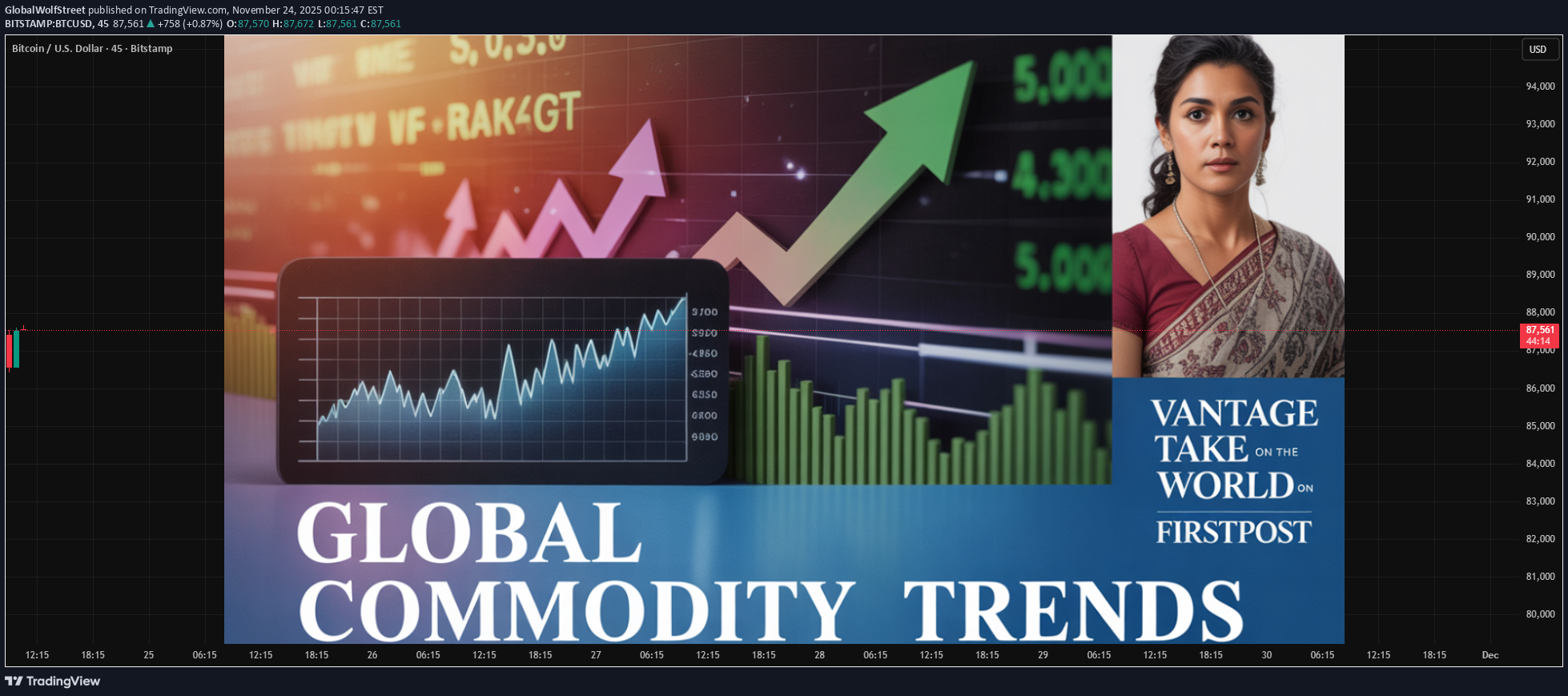تحليل التحليل الفني GlobalWolfStreet حول BTC في رمز في 24/11/2025
بازار جهانی کالا: همه چیز درباره تجارت، قیمتگذاری و آینده منابع حیاتی دنیا

1. Meaning of Global Commodity Market A commodity market is a marketplace where traders, producers, governments, investors, and consumers engage in the buying and selling of natural resources. These commodities are standardized, meaning one unit of the commodity is identical to another unit. For example, one barrel of Brent crude oil is considered identical to another barrel of the same grade. The global commodity market operates through: Spot markets – immediate delivery Futures markets – delivery at a future date Derivative markets – options, forwards, swaps It allows price discovery, hedging, risk management, and global distribution of critical resources. 2. Types of Commodities The global commodity market is broadly divided into two major categories: A. Hard Commodities These are natural resources that are mined or extracted. Energy Commodities Crude oil (Brent, WTI) Natural gas Coal Gasoline Energy is the largest and most traded commodity segment globally. Metals Precious metals: gold, silver, platinum Base metals: copper, aluminum, zinc, nickel Metals are crucial for construction, manufacturing, electronics, and industrial production. B. Soft Commodities These are agricultural or livestock products. Agricultural Commodities Wheat, rice, corn Sugar, coffee, cocoa Cotton, soybeans, palm oil Livestock Cattle Pork bellies Dairy products Soft commodities are essential for food production, clothing, and consumer goods industries. 3. Major Commodity Exchanges Global commodity trading takes place on several major exchanges: Chicago Mercantile Exchange (CME), USA Chicago Board of Trade (CBOT), USA New York Mercantile Exchange (NYMEX) London Metal Exchange (LME), UK Intercontinental Exchange (ICE) Multi Commodity Exchange (MCX), India These exchanges provide platforms for futures trading, price benchmarking, delivery, and settlement. 4. How Commodity Trading Works Spot Trading The commodity is delivered immediately and payment is done on the spot. For example, a refinery buying crude oil for immediate refining. Futures Trading A futures contract is an agreement to buy or sell a commodity at a fixed price at a future date. Futures trading helps in: Hedging price risk Speculation Arbitrage Portfolio diversification Options Trading Options give the right but not the obligation to buy (call) or sell (put) a commodity at a predetermined price. Derivative Instruments Forwards Swaps Index-based contracts These instruments help manage price volatility. 5. Price Determination in Commodity Markets Commodity prices fluctuate constantly due to global supply and demand dynamics. Key factors affecting pricing include: A. Supply Factors Production levels Mining output Agricultural yield Weather conditions Natural disasters Political instability in producing countries For example, geopolitical tensions in the Middle East immediately impact crude oil supply and prices. B. Demand Factors Industrial growth Manufacturing output Energy consumption patterns Global economic cycles Consumer behavior Countries like China, India, and the US heavily influence global demand for metals and energy. C. Geopolitical Events Wars, sanctions, export bans, and diplomatic conflicts significantly affect prices. D. Speculation and Investor Sentiment Large hedge funds and financial institutions influence market prices through large trading volumes. E. Currency Movements Most commodities are priced in US dollars, so when the dollar strengthens, commodity prices generally fall, and vice versa. 6. Role of Commodities in Global Economy The global commodity market influences: A. Inflation When commodity prices rise, production costs increase, leading to higher consumer prices. B. Trade Balance Commodity-exporting countries (e.g., Saudi Arabia, Russia) benefit from high prices, while importing nations face trade deficits. C. Government Revenues Many countries depend on commodity exports for fiscal income. For example: Oil revenues in Gulf countries Copper revenues in Chile Agricultural exports in Brazil D. Industrial Growth Commodities are essential raw materials. Energy, metals, and agricultural goods directly affect the manufacturing and services sectors. 7. Participants in the Global Commodity Market A. Producers Oil companies, miners, farmers, and government bodies that supply commodities. B. Consumers Refineries, factories, food companies, textile mills, and energy generators. C. Traders Individuals and institutions who buy and sell for profit. D. Hedgers Businesses use commodity futures to protect against price volatility. E. Speculators Take positions in commodities to profit from price fluctuations. F. Governments Play a key role through regulations, import/export policies, and strategic reserves. 8. Challenges in Global Commodity Markets A. Price Volatility Commodity prices are extremely sensitive to global events and may change rapidly. B. Geopolitical Risks Wars, sanctions, and political disputes disrupt supply chains and increase uncertainty. C. Climate Change Extreme weather events affect agricultural output, water availability, and mining conditions. D. Market Manipulation Large players may attempt to influence prices through hoarding or cartel-like behavior. E. Supply Chain Bottlenecks Shipping disruptions, port closures, or labor shortages can halt the movement of commodities. 9. Future Trends in the Global Commodity Market A. Renewable Energy Boom Demand for metals like lithium, cobalt, nickel, and copper is rising due to electric vehicles and green energy. B. Digitalization and AI Algorithmic trading and real-time analytics are transforming commodity trading efficiency. C. Sustainable Agriculture Countries are investing in climate-friendly farming and supply chains. D. Commodity Tokenization Blockchain may enable digital trading of commodity-backed tokens. E. Shift in Global Demand Asia, particularly India and China, will continue to drive commodity consumption. Conclusion The global commodity market is a dynamic and essential component of the world economy. It connects producers, consumers, governments, and financial institutions in a vast network of trade and investment. As commodities form the backbone of industrial production, energy supply, and food systems, their prices and availability influence economic growth, inflation, and geopolitical strategies. Although the market is complex and often volatile, it provides opportunities for risk management, investment, and global economic development. Understanding how the commodity market works is crucial for businesses, policymakers, and investors navigating today’s interconnected world.
